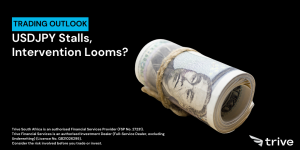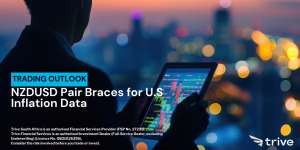
The USDZAR currency pair is currently navigating a landscape shaped by recent macroeconomic developments. After experiencing back-to-back weeks of decline, the pair appears poised for a potential resurgence, with a notable gain of 30 basis points recorded this week alone.
This shift comes on the heels of higher-than-expected U.S. inflation figures, which propelled the Greenback higher, reaching 3.5% in March, up from 3.2% the previous month. This uptick in inflation has prompted market participants to recalibrate their expectations, delaying anticipated rate cuts in the U.S. until September.
However, amidst these global shifts, the South African Rand demonstrated resilience, buoyed by robust domestic economic indicators. Notably, recent data from Statistics South Africa revealed significant growth in both mining and manufacturing sectors, with mining output surging by 9.9% year-on-year in February and manufacturing output accelerating by 4.1% over the same period. As markets digest these signals, the stage is set for a nuanced exploration of the factors influencing the USDZAR pair’s trajectory.
Technical
The USDZAR currency pair is undergoing a notable shift in sentiment, favouring the upside after a period of downward movement. Previously confined within a descending channel pattern and trading below the 100-day moving average, the pair recently broke out of this pattern and aligned with the moving average.
Initially encountering resistance around the 18.85659 level during the downtrend, selling pressures eased at 18.41019, establishing a support level amidst oversold RSI conditions. The pair’s rebound gained traction as buying pressures intensified, propelled by economic data bolstering the Greenback. This shift in sentiment was underscored by the breakout above the descending channel pattern, followed by a test of the 100-day moving average.
While the pair has yet to encounter the 18.85659 resistance level, sustained upside momentum may prompt a full retest. Conversely, a resurgence in selling activity could trigger a downturn, potentially exposing the pair to the 18.41019 support level. As market participants navigate these dynamics, attention remains on the interplay between technical indicators and broader economic trends, shaping the trajectory of the USDZAR pair.

Summary
Despite recent setbacks, the USDZAR pair exhibits signs of potential resurgence amid higher U.S. inflation. Breaking out of a descending channel pattern, it may retest resistance at 18.85659, supported by a shift in sentiment and technical indicators. Attention remains on key levels and economic influences.
Sources: Federal Reserve, U.S. Bureau of Labor Statistics, CME, Statistics South Africa, Reuters, TradingView
Piece Written By Nkosilathi Dube, Trive Financial Market Analyst
Disclaimer: Trive South Africa (Pty) Ltd (hereinafter referred to as “Trive SA”), with registration number 2005/011130/07, is an authorised Financial Services Provider in terms of the Financial Advisory and Intermediary Services Act, 37 of 2002. Trive SA is authorised and regulated by the South African Financial Sector Conduct Authority (FSCA) and holds FSP number 27231. Trive Financial Services Ltd (hereinafter referred to as “Trive MU”) holds an Investment Dealer (Full-Service Dealer, excluding Underwriting) Licence with licence number GB21026295 pursuant to section 29 of the Securities Act 2005, Rule 4 of the Securities Rules 2007, and the Financial Services Rules 2008. Trive MU is authorized and regulated by the Mauritius Financial Services Commission (FSC) and holds Global Business Licence number GB21026295 under Section 72(6) of the Financial Services Act. Trive SA and Trive MU are collectively known and referred to as “Trive Africa”.
Market and economic conditions are subject to sudden change which may have a material impact on the outcome of financial instruments and may not be suitable for all investors. Trive Africa and its employees assume no liability for any loss or damage (direct, indirect, consequential, or inconsequential) that may be suffered. Please consider the risks involved before you trade or invest. All trades on the Trive Africa platform are subject to the legal terms and conditions to which you agree to be bound. Brand Logos are owned by the respective companies and not by Trive Africa. The use of a company’s brand logo does not represent an endorsement of Trive Africa by the company, nor an endorsement of the company by Trive Africa, nor does it necessarily imply any contractual relationship. Images are for illustrative purposes only and past performance is not necessarily an indication of future performance. No services are offered to stateless persons, persons under the age of 18 years, persons and/or residents of sanctioned countries or any other jurisdiction where the distribution of leveraged instruments is prohibited, and citizens of any state or country where it may be against the law of that country to trade with a South African and/or Mauritius based company and/or where the services are not made available by Trive Africa to hold an account with us. In any case, above all, it is your responsibility to avoid contravening any legislation in the country from where you are at the time.
CFDs and other margin products are complex instruments and come with a high risk of losing money rapidly due to leverage. You should consider whether you understand how these products work and whether you can afford to take the high risk of losing your money. Professional clients can lose more than they deposit. See our full Risk Disclosure and Terms of Business for further details. Some or all of the services and products are not offered to citizens or residents of certain jurisdictions where international sanctions or local regulatory requirements restrict or prohibit them.




